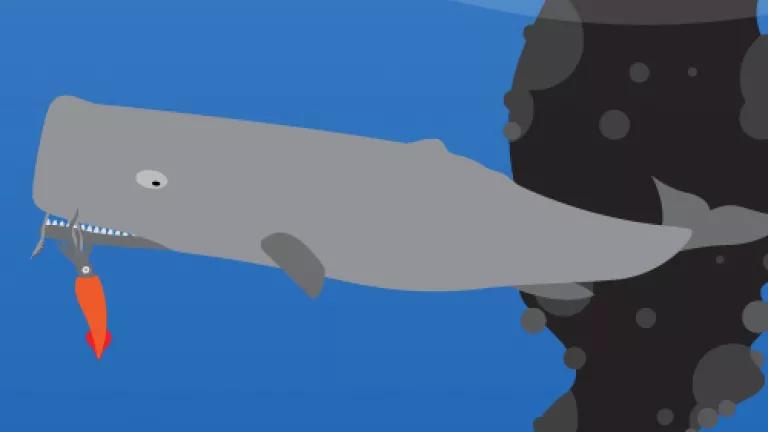
From a previous blog of mine, “The many pathways (and impacts) of the Oil – from the surface to the Seafloor”, Kathryn McGrath (NRDC's Manager of Social Media and Blogging) and illustrator Jason Bishop worked together to produce this fantastic interactive illustration of the various potential impacts of the leaked oil in the Gulf of Mexico.
You can see the interactive here on NRDC.org , and there's a sample below.
Because the volume of oil from this incident is so immense and the input is from the sea floor, biota from the entire water column – from top to bottom - are at risk. In other words, there may be no refuge from the hydrocarbons (oil and methane) in the region of the well. This could prove to be a significant characteristic of this event and one that is not well understood by scientists.
The challenge now, as set out in the Oil Pollution Act of 1990, is to document the fate of the oil, its harm, and the necessary actions for restoration. This should be accomplished through two parallel lines of research, science associated with the Natural Resource Damage Assessment (NRDA) and independent, academic research that is funded through a truly independent entity (e.g., the National Science Foundation).
